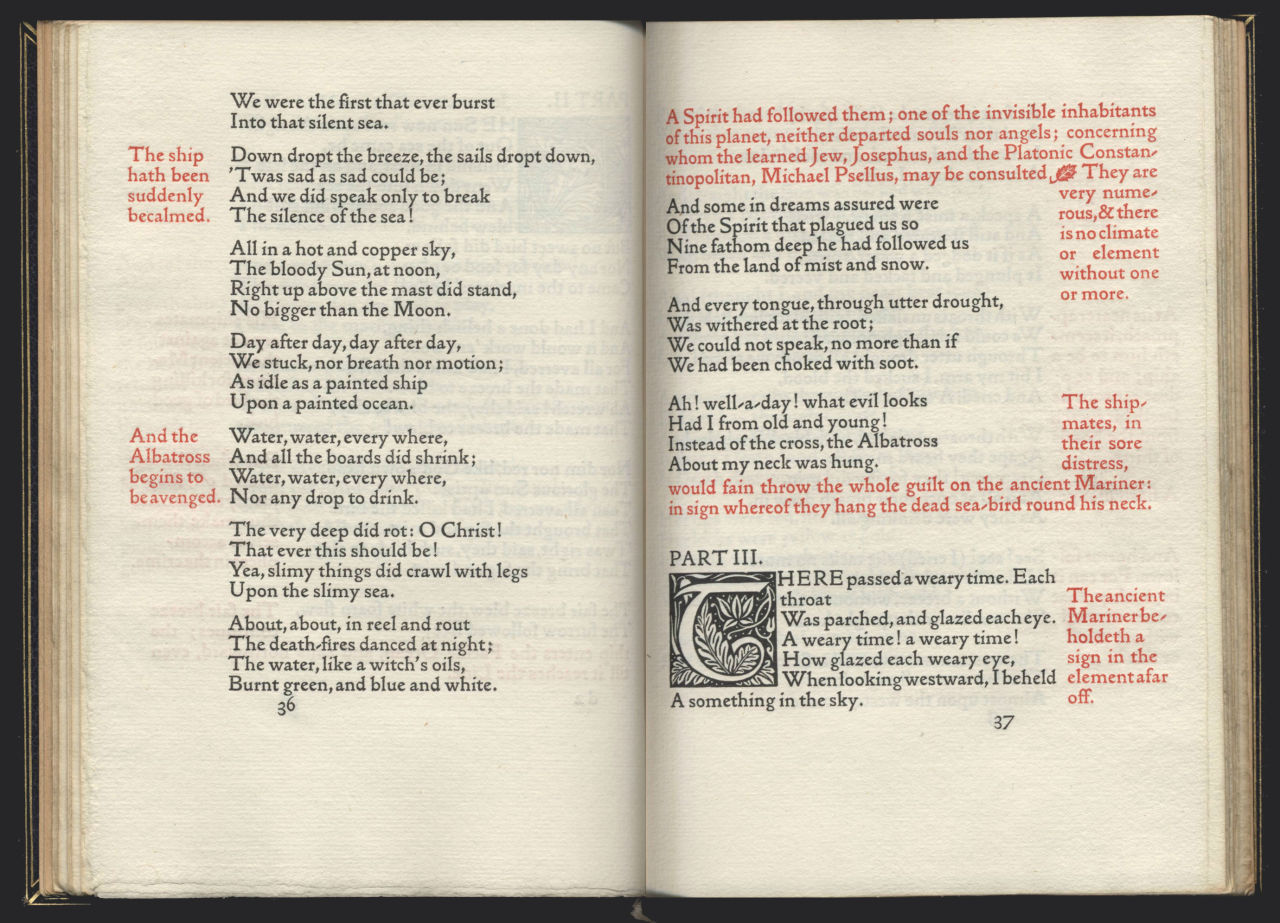
William Morris' attention to the importance of quality paper is evident in each of the books printed by the Kelmscott Press. Morris' books were printed on handmade linen paper that was meant to mimic the material qualities of paper used in Renaissance printing. The paper was crafted by the Kent-based papermaker, Joseph Batchelor.
This book is set in "Golden Type," the typeface that William Morris designed for use in his Kelmscott Press. Morris' typeface takes its inspiration from the the letterforms of fonts designed by the printer Nicolas Jansen in the 15th century. Morris's new set of type, which evokes the design of both blackletter script and Renaissance humanist typefaces, sought to counter the "Didone" typefaces used in the mass printing of books in the 19th century.
A woodblock "T" ornament designed by William Morris. Illustrative elements are ubiquitous in Kelmscott Press books. Each letter in the alphabet had many different woodblock variations that Morris used throughout the printing of his volumes. The T, for example, had 34 variants.
